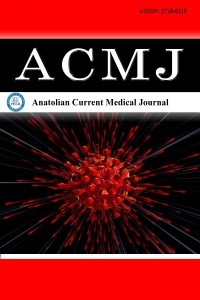1.
Fazzi E, Molinaro A. Visual function and neurodevelopment in children: from neuroscience to rehabilitation. In: Fazzi E, Bianchi PE, eds. Visual impairments and developmental disorders: from diagnosis to rehabilitation. John Libbey Eurotext; 2016.
2.
Sonksen PM, Dale N. Visual impairment in infancy: impact on neurodevelopmental and neurobiological processes. Dev Med Child Neurol. 2002;44(11):782-791. doi:10.1017/S0012162201002936
3.
Brambring M. Divergent development of manual skills in children who are blind or sighted. J Vis Impair Blind. 2007;101(4):212-225. doi:10. 1177/0145482X0710100404
4.
Burton MJ, Ramke J, Marques AP, et al. The Lancet global health commission on global eye health: vision beyond 2020. Lancet Glob Health. 2021;9(4):e489-e551. doi:10.1016/S2214-109X(20)30488-5
5.
Teoh LJ, Solebo AL, Rahi JS; British Childhood Visual Impairment and Blindness Study Interest Group. Visual impairment, severe visual impairment, and blindness in children in Britain (BCVIS2): a national observational study. Lancet Child Adolesc Health. 2021;5(3):190-200. doi:10.1016/S2352-4642(20)30366-7
6.
Royal College of Ophthalmologists. Ophthalmic services for children. Published 2021. Accessed December 28, 2024. https://www.rcophth.ac. uk/resources-listing/ophthalmic-services-for-children/
7.
Çocuklar için özel gereksinim değerlendirmesi hakkında yönetmelik (ÇÖZGER). Resmi Gazete. February 20, 2019 (mükerrer). Accessed December 28, 2024. https://www.resmigazete.gov.tr/eskiler/2019/02/ 20190220-1
8.
Şahin N, Altun H, Kara B. Özürlü çocuk sağlık kurulu raporlarının değerlendirilmesi. KTD. 2014;15(1):48-53. doi:10.18229/ktd.19378
9.
Başgül ŞS, Saltık S. Göztepe Eğitim ve Araştırma Hastanesi-Özürlü Çocuk Heyeti’nin 2010 yılı verileri. Göztepe Tıp Dergisi. 2012;27(2):45-49.
10.
Temeltürk RD, Uygun SD, Canlı M, et al. Çocuklar için özel gereksinim raporu (ÇÖZGER)’na başvuran olguların psikiyatrik tanı ve özel gereksinim düzeylerinin önceki yönetmelikteki tanı ve özür oranları ile karşılaştırılması: retrospektif çalışma. Acta Med Nicomedia. 2023;6(1): 148-156. doi:10.53446/actamednicomedia.1134146
11.
Kaba D, Çelik S, Çelik H, et al. Transition to the special needs report for children (SNRC): an analysis of referrals to child and adolescent psychiatry over the last three years. Kırıkkale Uni Med J. 2024;26(2):180-186. doi:10.24938/kutfd.1454116
12.
Büyükavcı R, Büyükavcı MA, Aktürk S. The role of physical medicine and rehabilitation physicians in special needs reports for children. Anadolu Klin. 2022;27(3):275-280. doi:10.21673/anadoluklin.1080152
13.
Sauer T, Lawrence L, Mayo-Ortega L, et al. Refractive error and ocular findings among infants and young children with severe problem behavior and developmental disabilities. J Ment Health Res Intellect Disabil. 2018;11(4):251-265. doi:10.1080/19315864.2018.1497108
14.
Kaya Güner E, İnci Bozbıyık D. The role of ophthalmology in the special needs report for children. Ege J Med. 2024;63(1):136-142. doi:10.19161/etd.1312122
15.
Sayın O, Ağca O, Adam M, Dirican E. Özel gereksinim raporu için başvuran çocuk hastalardaki göz bulguları. MN Oftalmoloji. 2021;28(1): 6-12.
16.
Mohapatra M, Rath S, Agarwal P, et al. Cerebral visual impairment in children: multicentric study determining the causes, associated neurological and ocular findings, and risk factors for severe vision impairment. Indian J Ophthalmol. 2022;70(12):4410-4415. doi:10.4103/ijo.IJO_801_22
17.
Teär Fahnehjelm K, Dahl S, Martin L, Ek U. Optic nerve hypoplasia in children and adolescents: prevalence, ocular characteristics and behavioural problems. Acta Ophthalmol. 2014;92(6):563-570. doi:10. 1111/aos.12270
18.
Dahl S, Wickström R, Ek U, Teär Fahnehjelm K. Children with optic nerve hypoplasia face a high risk of neurodevelopmental disorders. Acta Paediatr. 2018;107(3):484-489. doi:10.1111/apa.14163
19.
İdil AM. Az gören çocuklarda görsel rehabilitasyon. Turkiye Klinikleri J Ophthalmol-Special Topics. 2011;4(2):73-78.
20.
Özen Tunay Z, Çalışkan D, İdil A, Öztuna D. Clinical characteristics and low vision rehabilitation methods for partially sighted school-age children. Turk J Ophthalmol. 2016;46(2):68-72. doi:10.4274/tjo.82653
21.
Donaldson L, O'Brien D, Karas M. A review of the evidence that people with learning disabilities experience eye health inequalities: what policies can better ensure an equal right to sight? Br J Learn Disabil. 2024;52(2):302-311. doi:10.1111/bld.12573
22.
Sethi VD, Trend U. Early recognition of children with special educational needs: report from a district.Public Health. 1996;110(2):107-108. doi:10.1016/s0033-3506(96)80055-2

